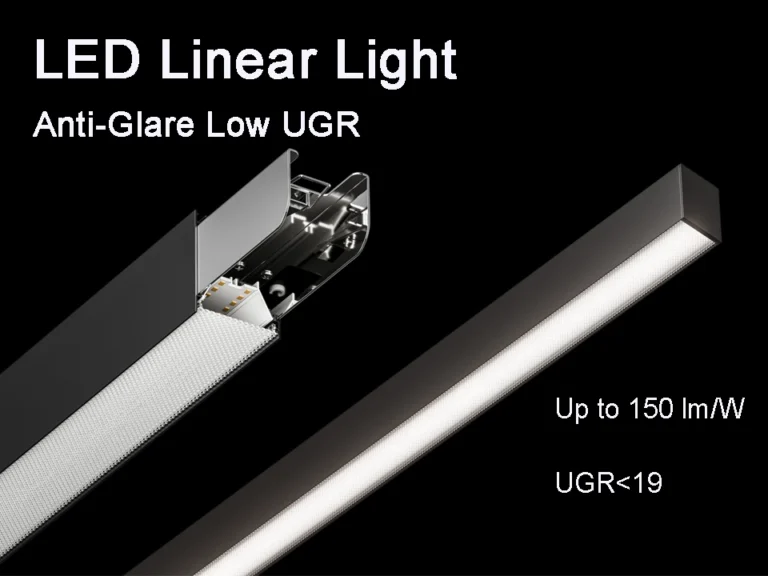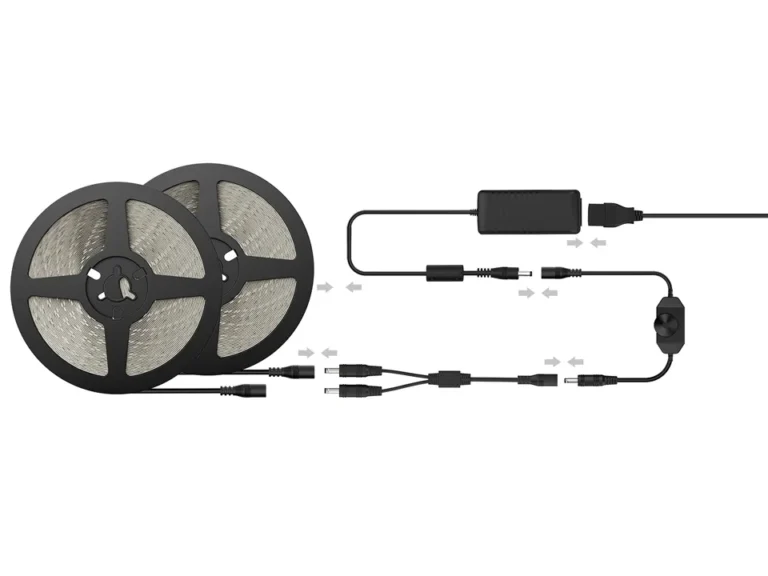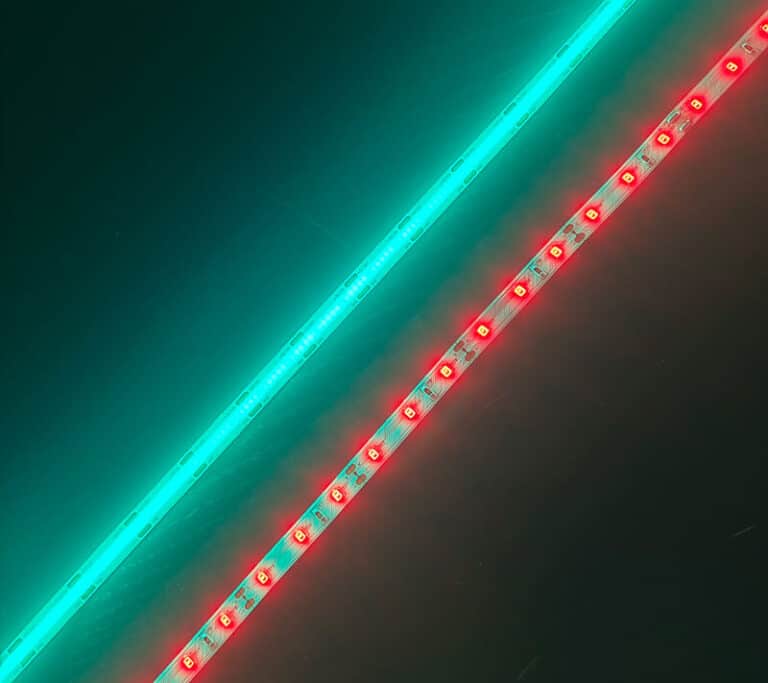イチゴはもはや季節の果物ではありません。現代の栽培技術のおかげで、温室や屋内農場で一年中栽培できるようになりました。 これを可能にする重要な技術の 1 つは、LED 成長ライトの使用です。 適切な光のスペクトルと強度を提供することで、栽培者は開花を改善し、収穫量を増やし、暗い季節でも果物の品質を向上させることができます。 でも、照明だけでは十分ではありません。 イチゴの栽培が成功するかどうかは、温度、湿度、栄養素、受粉の慎重な管理にも依存します。 商業生産者にとって、これらの要因のバランスを取る方法を理解することは、高品質の果物を一貫して生産するために不可欠です。
ストロベリー栽培に LED グロー ライトを使用する理由
1. 正確な補足照明による自然光のギャップの緩和
冬の灰色の北ヨーロッパやカナダの高緯度では、短い日と雲量が光合成を抑制する可能性があります。 イチゴ用の LED グロー ライトは、生産者に補足照明の信頼できる光源を提供し、制御された光周期と一貫した毎日の光積分を維持します。 強度を時間ごとに微調整することにより、植物は曇り空や氷点下の気温の下で失速するのではなく、スケジュールどおりに調整されます。
2. より迅速で効率的な成長のためのターゲットを絞ったイチゴの光スペクトル
高PPFD LED フィクスチャにより、栽培者は、青 (430-460 nm) と赤 (640-660 nm) の光子が豊富なカスタム ストロベリー ライト スペクトルと、調整可能な遠赤色の光を提供できます。 これらの波長は、クロロフィルの吸収を最大化し、植物をより速く栄養段階に押し込み、全体的な成長サイクルを短くし、より早く均一な開花を引き起こします。
3. 害虫の少ないプレミアム ストロベリー品質
バランスの取れた冷房 LED により、湿度を厳しく制御できます。これにより、ボトリチスやうつ病の圧力が抑制され、化学薬品の噴霧が少なくなります。 同時に、チューニングされたスペクトルは、可溶性固形分を高め、赤色の色素沈着を深め、香りを強め、果物に色、甘さ、そして強化された味わいを与え、棚のスペースと消費者の忠誠心を獲得します。

4. 商用ストロベリー生産の収量が高く、ROI が強化されています
イチゴは価値の高いクイックターンの作物であるため、生産量の増加は直接利益につながります。 エネルギー効率の高い LED (PPE ≥ 2.8 µmol/j) は電気コストを削減し、そのスペクトルの均一性により、果実の重量と植物あたりの数が増加します。 商用ストロベリーの生産試験では、15 ~ 30 の % がより高い収量とより速い回収を示し、プロの生産者に LED 照明の魅力的な ROI を提供します。
イチゴが最適な成長を遂げるために必要なスペクトルは何ですか?
イチゴは、ほとんどの結実作物と同様に、特定の波長の光に強く反応します。 光スペクトルの各部分は、初期の栄養成長から開花や果実の成熟に至るまで、植物の発育において独特の役割を果たします。
青色光 (430 ~ 460 nm)
ブルーライトは栄養の成長をサポートし、根が強く、葉っぱのあるコンパクトな植物を作るのに役立ちます。 また、気孔の開口部を調節し、水の効率と栄養素の取り込みを改善します。
赤色光 (640 ~ 660 nm)
開花時や結実時には赤信号が欠かせません。 花の発達を促進し、果実のサイズを大きくし、熟成を促進します。 高収量のストロベリー生産には、強い赤色成分が不可欠です。
極赤色光 (710 ~ 730 nm)
遠赤色の光は開花時期に影響を与え、植物の伸縮に影響を与える可能性があります。 制御された量で、花の形成を同期させ、果実の均一性を改善することができます。
緑色の光 (500 ~ 570 nm)
吸収は少ないですが、緑色の光はキャノピーの奥深くまで浸透し、下葉を支え、全体的な光合成と植物のバランスに貢献します。
一般的なストロベリー栽培の推奨スペクトル比:
通常、ストロベリーのバランスの取れたフルスペクトル LED 成長ライトには、次のものが含まれます。
青: 15–20%
赤: 60–70%
遠赤: 5–10%
緑/白: 10–15% (視認性と全天蓋のカバー率を向上させるため)
この組み合わせにより、強力な栄養成長、効率的な開花、および果実の品質の向上が保証されます。
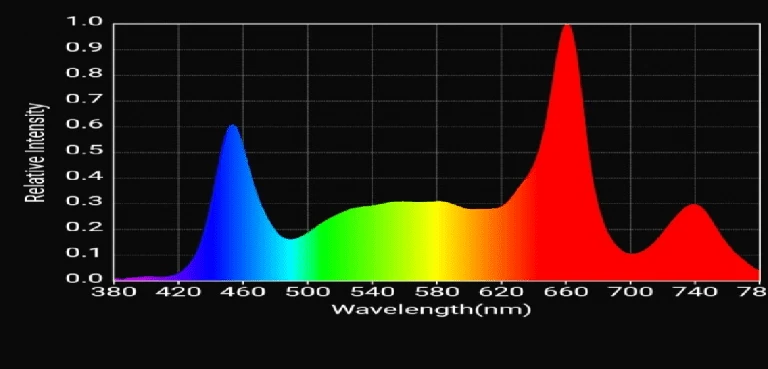
ストロベリー タイプによるカスタム スペクトラムの推奨事項:
日中中性のイチゴ (例: Albion、Seascape):
赤と青の比率 (~4:1) が高く、遠赤が追加され、連続開花と高速の循環が促進されます。
短日の品種 (例: Chandler、Camarosa):
開花期の前に栄養生長を強化するために、青色の増強 (比 3:1) を備えた適度な赤色光の恩恵を受けます。
垂直農場で常に持つ品種:
植物がスペースに限られたシステムでコンパクトに保たれると同時に、結実のために強い赤を維持するために、より高い青色の含有量 (~25%) が必要になる場合があります。
イチゴの種類と成長するシステムに応じて光スペクトルを調整することにより、生産者は収量を最適化し、成長サイクルを短縮し、LED 栽培下での果実の品質を向上させることができます。
イチゴ栽培用の LED 栽培ライトで探すべき主な機能
適切な LED 成長ライトを選択することは、商業事業で一貫した高品質のイチゴの収量を達成するために重要です。 プロの生産者が考慮すべき 5 つの重要な機能を次に示します。
1. 高効率 (PPE ≥ 2.8 μmol/j)
光合成光子効果 (PPE) は、成長光が電気エネルギーをどのように効果的に植物の成長に使用できる光子に変換するかを測定します。 栄養段階と結実段階の両方で軽いイチゴの場合、2.8 μmol/j 以上の PPE は、強力な成長を維持しながらエネルギー コストを下げます。 高効率の LED 成長ライトは、特に大規模なイチゴの農プロジェクトにおいて、経時的な運用コストを削減し、ROI を向上させます。
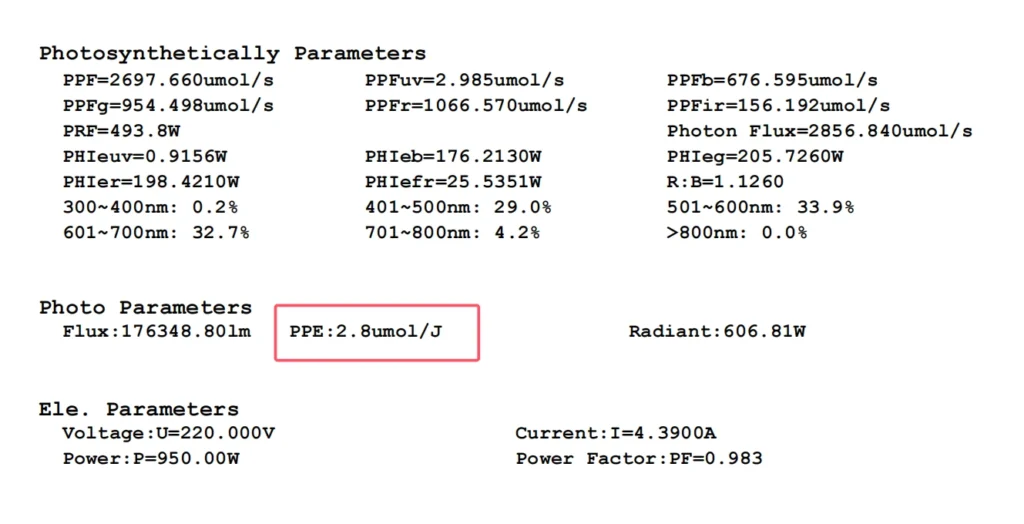
2. 均一な PPFD と配光
光合成光子フラックス密度 (PPFD) は、植物の天蓋に到達する光の量を決定します。 果実の発生についても、PPFD は、生育地域全体で一貫しており、ホット スポットやドロップオフが最小限に抑えられている必要があります。 不均一な照明は、不規則な開花とさまざまな果実の品質につながります。 均一な配光を備えた適切に設計された LED システムにより、すべてのイチゴの植物が最適な光に照射され、全体的な生産性が向上します。
3. 設置高さに基づく適切な出力
イチゴの生産者は、多層または温室システムを使用することがよくあります。 LED 成長ライト (ワット単位) のパワーは、設置高さとプラント間隔に一致する必要があります。 たとえば、200W ~ 400W のフィクスチャは、30 ~ 60 cm の垂直ラックに最適である場合がありますが、600W ~ 800W の場合は、高温の温室のセットアップに適している場合があります。 パワー不足のライトは必要な PPFD を提供しませんが、パワーを使いすぎるとエネルギーを浪費したり、葉のストレスを引き起こす可能性があります。
4. 調光可能でスペクトル調整可能な機能
調光機能により、栽培者はさまざまな成長段階で光の強度を調整できます。初期の栄養成長には低、開花中および結実中は高くなります。 より高度なシステムは、スペクトルの調整可能性を提供し、目標とする波長の調整 (たとえば、結実中に赤を増やす) を可能にし、ストロベリーの収量と品質を最大限に高めることができます。 これらの柔軟な照明システムは、さまざまなストロベリーの品種や成長環境に適応し、精密農業に最適です。
5. 集中管理のためのデイジーチェーンの互換性
商用ストロベリーの生産では、何百ものライトを個別に管理することは非効率的です。 複数のユニットを 1 つの制御システムにリンクするデイジー チェーンをサポートする LED グロー ライトは、同期調光、スケジューリング、およびスペクトル チューニングを有効にします。 集中管理により、エネルギー効率が改善され、労力が削減され、すべての生育地帯で均一な作物が発生します。

高 PPE、均一な PPFD、調整可能な出力、およびインテリジェントな制御機能を備えた LED 成長ライトを選択することにより、イチゴの生産者は、今日の精密園芸の状況で競争力を維持するための鍵となる、収量と品質の両方で栽培環境を最適化できます。
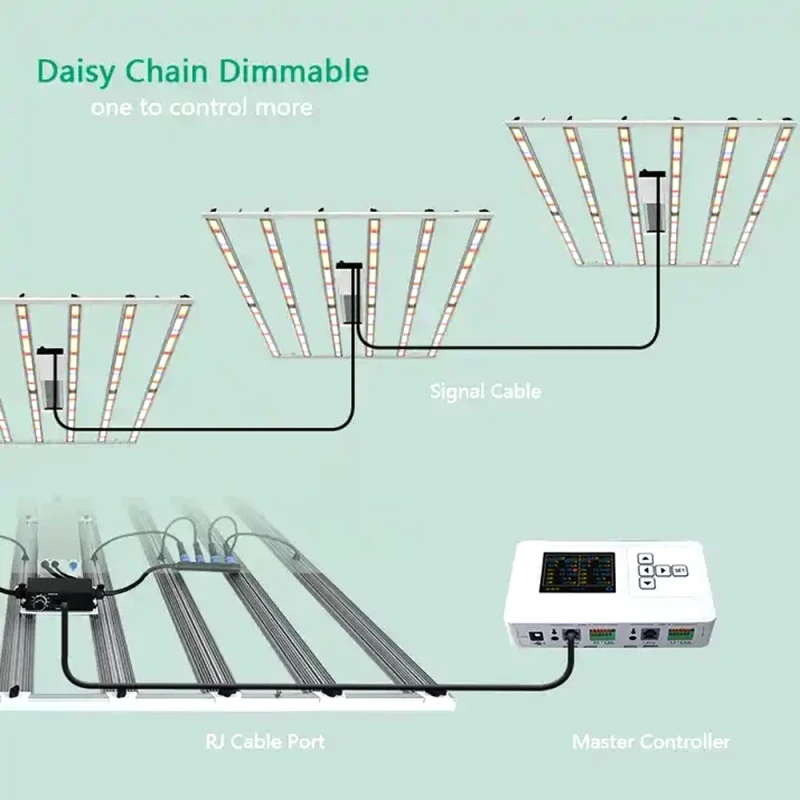
照明以外: 屋内でのイチゴ栽培を成功させるためのその他の重要な要素
LED 栽培ライトは、現代のイチゴの栽培において重要な役割を果たしますが、照明だけでは高収量や高品質の果実の品質を保証することはできません。 温室環境と屋内環境で一貫して成功するためには、生産者は他のいくつかの環境および栽培要因も管理する必要があります。 主な考慮事項は次のとおりです。
1. 温度と湿度の制御
イチゴは、日中は 18 ~ 24 °C (64 ~ 75 °F) の温度で繁栄し、夜は少し涼しくなります。 気温が高くなりすぎると、植物の開花が止まったり、形が崩れたりすることがあります。 同時に、相対湿度を 60 ~ 70% に維持することで、ボトリス (灰色のカビ) などの病気のリスクを軽減することができます。 LED グロー ライトは、放射熱を最小限に抑え、植物にストレスを与えることなく、気候を正確に調整するのを容易にします。
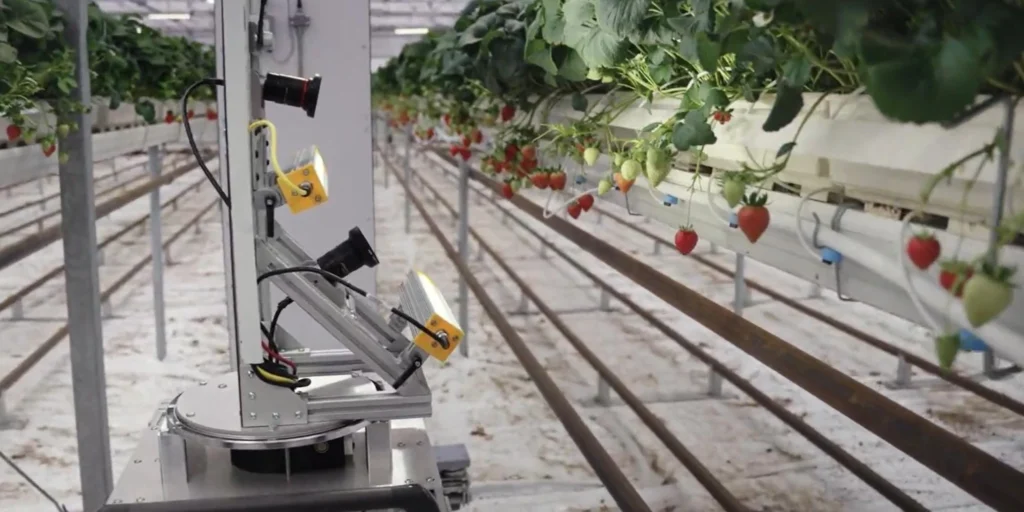
2. 受粉管理
葉の多い野菜とは異なり、イチゴは受粉して形の良い果実を形成する必要があります。 温室では、マルハナバチや手動受粉ツールの使用が含まれることがよくあります。 適切な気流と花のわずかな振動も役立ちます。 LED 照明は、一貫した開花を保証し、より予測可能な受粉サイクルを可能にします。
3.栄養素の送達と基質の選択
イチゴは、栄養素のバランスと根域の両方の条件に敏感です。 多くの生産者は、安定した根環境を提供するために、コココイア、ロックウール、または水耕栽培システムなどの土壌のない基質を選択します。 特にカルシウム、カリウム、マグネシウムを使用した正確な栄養補給は、果実の硬さ、風味、および保存期間に不可欠です。 自動化された施肥システムは、商用設定でよく使用されます。
4. 空気循環と CO2 レベル
空気の動きが良いと、葉や花の周りに湿気がたまりを防ぎ、病気のリスクを軽減します。 密閉された環境では、アクティブな換気システムと水平方向の空気流ファンが、温度と湿度を均一に保つのに役立ちます。 さらに、CO の維持2 800 ~ 1000 ppm 前後のレベルは、高 PPFD LED 照明と組み合わせると、光合成を促進し、果実の収量を高めることができます。
5. 植物密度と支援システム
過密状態は、気流が悪くなり、軽い閉塞が生じ、結実が不均一になる可能性があります。 よく計画されたレイアウト (垂直ラックまたは水平列) により、各プラントが十分な光と空間を確保できます。 実を含む品種では、サポート ワイヤーやトレリスを使用すると、イチゴを高く保ち、地面との接触による傷や腐敗を軽減します。
プロフェッショナル LED 栽培ライトと正確な環境制御、栄養管理、受粉戦略を組み合わせることで、栽培者はイチゴの理想的な屋内環境を作り出すことができます。 この統合されたアプローチは、一年中一貫した高品質の収穫を達成するための鍵となります。
グローバルストロベリー栽培市場の概要
イチゴは世界で最も広く消費されているベリーの 1 つであり、その風味、健康上の利点、および生鮮食品や加工食品の多様性に基づいて需要が高まっています。 世界的な消費が増加するにつれて、LED グロー ライトによって支えられる温室や室内の農業など、より効率的な一年中栽培方法が必要になります。

1. イチゴの主要生産地域
中国、米国、メキシコ、スペイン、トルコなどの国が世界のストロベリー生産を支配しています。 中国は総量でリードしていますが、米国とメキシコは北米への主要な輸出国です。 ヨーロッパでは、スペインは特に冬季のトップ生産者およびサプライヤーです。 これらの地域では現在、生産効率を高め、オフシーズンの需要を満たすために、制御環境農業 (CEA) 技術を採用しています。
2. 年間を通じて供給需要が高まる
消費者は、特に北米、ヨーロッパ、アジアの一部で、イチゴが年間を通じて入手できると期待しているため、生産者は生産を安定させるために温室、垂直農場、LED 栽培照明システムに目を向けています。 LED 照明は、暗い気候や冬の間でも一貫した収量を実現し、輸入された果物への依存を減らし、サプライ チェーンを短縮するのに役立ちます。
3. 屋内と都市の農業への移行
都市の中心部や耕作地の限られた地域では、水耕栽培システムまたは航空機システムを使用した屋内イチゴの栽培が注目を集めています。 日本、オランダ、UAE などの国は、フルスペクトルの LED 照明の下でイチゴを栽培するハイテク 屋内農場に投資しています。 この傾向は、気候変動、水不足、および地元の食料生産の必要性に対応して、拡大すると予想されます。
4. 生産者と流通業者のための経済的機会
イチゴは、特に生鮮またはプレミアム オーガニック フルーツとして販売される場合に、利益率の高い作物です。 高度な LED 照明と環境制御システムを採用することで、生産者は収量と果実の品質を向上させ、収益性を高めることができます。 ディストリビューターと卸売業者は、安定したオフシーズンの供給とより良い貯蔵寿命の恩恵を受けます。 これにより、LED 栽培ライトを使用した商用ストロベリー ファーミングは、先進国と新興市場の両方で強力なビジネス チャンスになります。
5. 市場予測とテクノロジーの採用
業界の報告によると、世界のストロベリー市場は、次の 5 年間で着実に成長すると予想されており、生産のシェアが制御された環境に移行するにつれて、生産量が増加しています。 LED 成長光技術は、この移行の重要な実現要因であり、ベリー作物に合わせたエネルギー効率の高いスケーラブルなソリューションを提供します。 カスタマイズと技術指導をサポートするメーカーとサプライヤーは、この拡大セグメントに対応するための適切な位置にあります。
市場の需要が強く、経済が好調で、技術が急速に進歩しているため、LED グロー ライトの下でのストロベリー栽培は、現代の果物生産の世界的な基準になるように設定されています。
ケース スタディ: LED グロー ライトがどのようにストロベリーの収量と品質を向上させるか
より多くの生産者がイチゴ栽培に LED 栽培ライトを採用するにつれて、実世界の結果は、収量、果物の品質、および全体的な運用効率を改善する上で、最適化された照明システムの価値を示しています。 高性能 LED 成長ライトを使用した商用ストロベリー プロジェクトから観察された主な結果は次のとおりです。
1. 収量の増加と作物のサイクルの短縮
制御された環境試験では、従来の HPS 照明から高 PPE (2.8 μmol/j 以上) の高輝度 LED 成長ライトに切り替えると、15 ~ 30% の収率が増加し、対象を絞った赤と青の光により、植物はより早く、より均一に開花し、全体の収穫サイクルが 7 ~ 10 日短縮されました。 年間複数の植栽サイクルを持つ生産者にとって、これは年間生産量を大幅に増加させる可能性があります。
2. 果実の品質の向上
LED 照明は、Brix レベル (糖含有量)、果実の硬さ、色に直接影響を与える、光スペクトルと強度を正確に制御できます。 北ヨーロッパでのある温室プロジェクトでは、調整可能なスペクトル LED の下で栽培されたイチゴがより豊かな赤色と強い香りを示し、高級小売業者にとってより魅力的になりました。 果実のサイズもより均一になり、市場性が向上しました。
3. 病気の発生率の低下
冷房運転用の LED 成長ライトは、過熱を減らし、湿度管理を改善します。 これは、特に高密度システムにおいて、ボトリチス・シネレアなどの一般的な真菌性疾患の蔓延を制限するのに役立ちます。 一部の生産者は、従来の照明を使用した以前の設定と比較して、作物の損失が 30 ~ 40% に減少したと報告しています。
4. 運用効率と柔軟性
調光可能でデイジーチェーンの LED 栽培用の LED ライトを使用する生産者は、集中管理、より簡単なスケジューリング、およびより低い労力の必要性から恩恵を受けます。 日本でのある垂直農業事業では、スペクトル調整可能な器具を使用して、成長段階にまたがるさまざまなストロベリーの軽いレシピをカスタマイズしました。すべてが 1 つのコントローラーから管理されています。 この柔軟性により、作物のパフォーマンスと運用効率の両方が向上しました。
5. 商業生産者の実例
米国を拠点とする屋内農場は、日中中性のイチゴ (Albion など) を栽培し、SignLite が提供する LED グロー ライトに切り替えました。 赤青-遠赤スペクトルを最適化し、さまざまな成長段階で調光可能な機能を使用することにより、ファームは次のことを達成しました。
28% の m² あたりの歩留まり増加
平均サイクル タイムの 2 週間の短縮
95%+ の市場性のある果実の割合
HPS と比較して 30% 以上のエネルギー節約
これらの結果は、LED 栽培ライトが適切に選択され、制御された栽培システムに統合された場合、特にプレミアムまたはオフシーズンの市場をターゲットにする生産者にとって、ストロベリー生産の経済性と品質をどのように変革できるかを浮き彫りにしています。

プロのストロベリー グロー ライトをまとめて購入する場所
適切な成長光サプライヤーを選択することは、適切なスペクトルを選択することと同じくらい重要です。 商用ストロベリー栽培の場合、園芸照明の要件とプロジェクト固有のニーズの両方を理解しているメーカーと協力することが不可欠です。 に サインライト(キングロウライツ)、私たちは、イチゴのような結実作物向けに設計された高効率 LED 成長ライトを専門としています。 15 年以上の経験、社内研究開発、およびグローバル プロジェクトの実績により、標準のフルスペクトル ライトや高度な屋内農場向けの調整可能なシステムが必要か、カスタマイズ可能なソリューションを提供します。
信頼できる照明でストロベリーの生産量を増やしたいですか?
一括価格設定、技術相談、またはテスト用のサンプルをリクエストするために、今すぐチームに連絡してください。
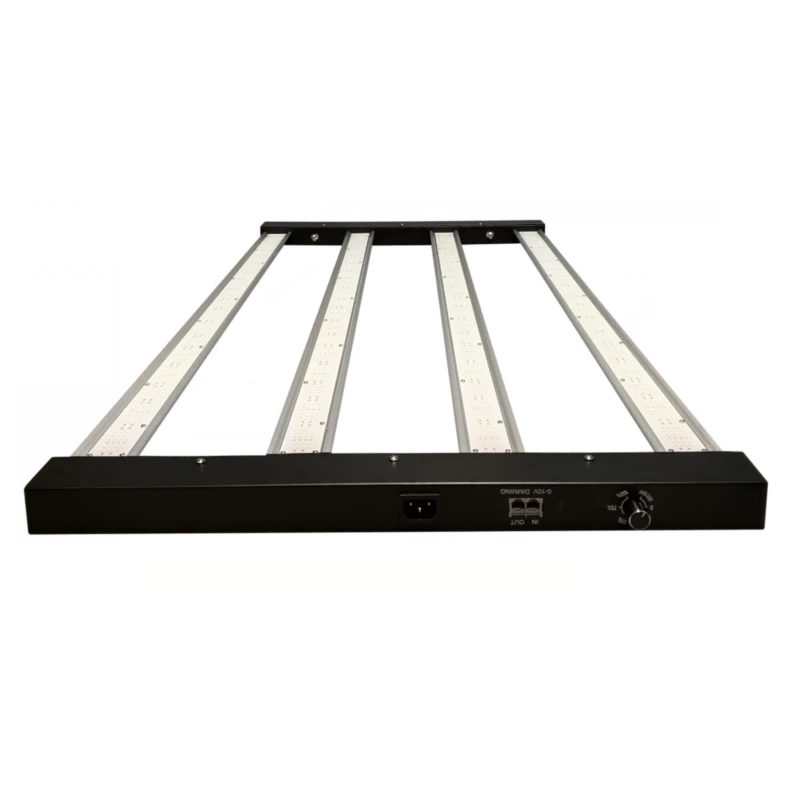
折りたたみ式 1000W 5x8フィート コアカバレッジ LED 栽培ライト(UV IR付き)
- ストロベリーの全スペクトル、60% レッド + 20% ブルー + 20% ホワイト、IR
- 1m間隔の4つのバー、均一なPPFD用
- 高 PPE、最大 3.0umol/j
- 折りたたみ式の器具は、輸送、保管、設置が簡単で、コストを節約できます。
- デイジーチェーンデザイン、複数のコントロールが利用可能
- カスタマイズ可能なソリューションを提供する
- 5年保証

